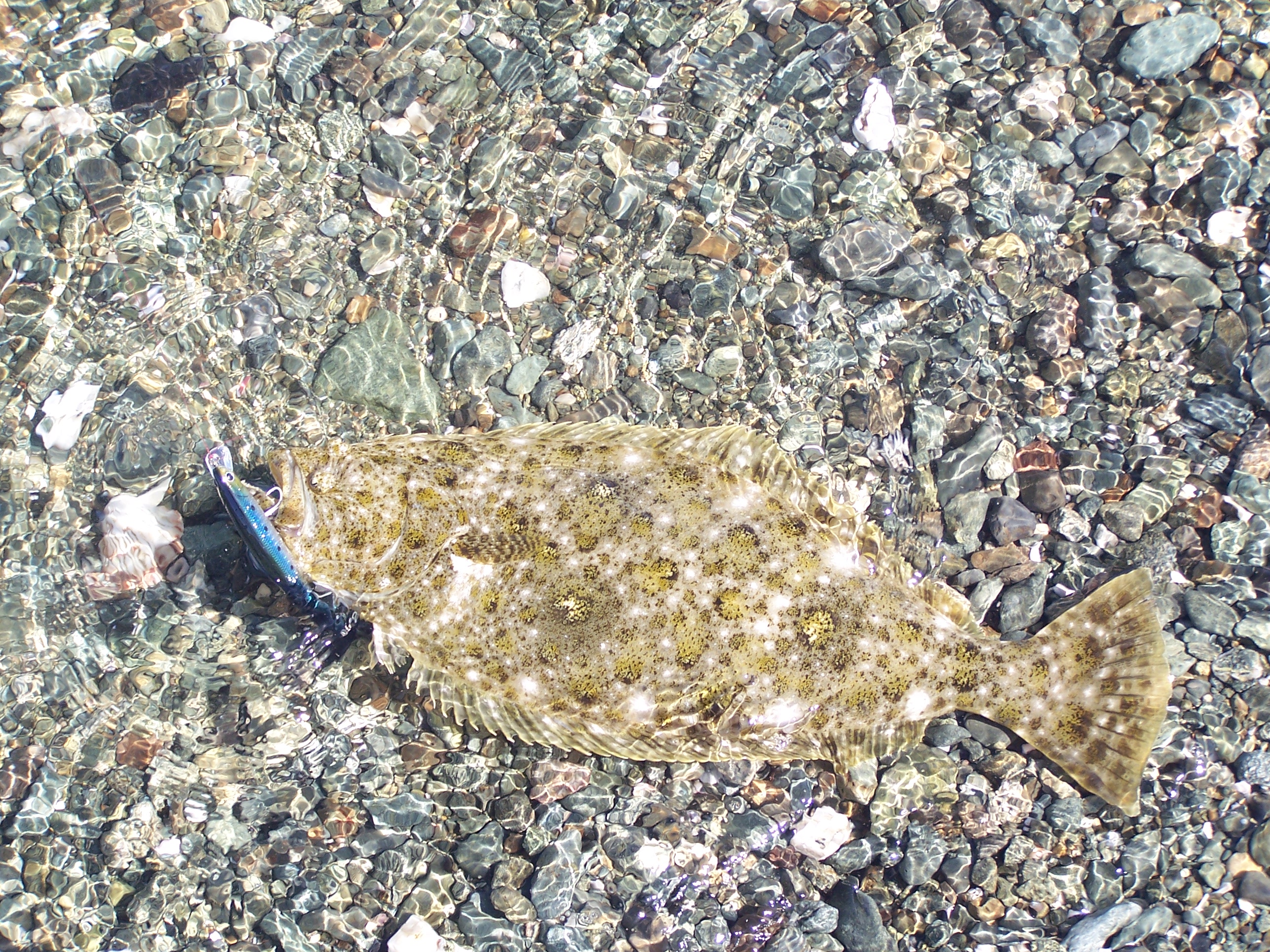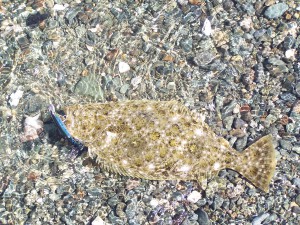Finding Halibut at the Beach
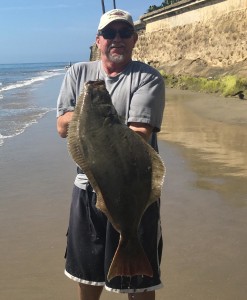 I’m often asked: what is the best tasting fish from the surf? Well the truth is, I release all of my fish back into the water with one exception—the occasional legal halibut. And it seems like I’m not alone. California’s Department of Fish and Wildlife (formerly Fish and Game) has stepped up their monitoring of halibut fishing this year in response to concerns about over fishing–All the result of so many anglers turning to halibut because of rockfish closures along the West Coast.
I’m often asked: what is the best tasting fish from the surf? Well the truth is, I release all of my fish back into the water with one exception—the occasional legal halibut. And it seems like I’m not alone. California’s Department of Fish and Wildlife (formerly Fish and Game) has stepped up their monitoring of halibut fishing this year in response to concerns about over fishing–All the result of so many anglers turning to halibut because of rockfish closures along the West Coast.
Fortunately, halibut fishing from the surf has been exceptional over the last four years. In fact, it seems to be getting better every season. In order to target halibut here are a few tips to help you find them at the beach.
Best Places to Find Halibut
Some of my favorite places to fish for halibut are along the open beach, around jetties and near estuaries and river mouths.
Open beaches offer a challenge when targeting halibut. When you reach the beach find a high spot near the water’s edge and look up and down the beach for signs of fish. Because surf fish congregate near areas of jumbled or foaming water look for small rip currents that form just off shore. Another area to target is offshore structure including holes, troughs, kelp beds and reefs. Once you spot these areas, cast your bait or lure along the edge of a rip current, structure or where rocks meet sand–this is where fish will be waiting to ambush bait.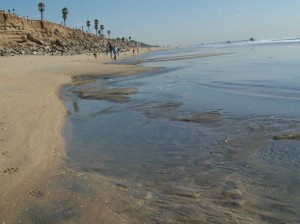
Halibut also congregate in the offshore troughs that are built just below the waves. These troughs are easiest to find at low tide and run parallel to the beach. One trough will form outside where the waves break farthest out from the beach, another trough will form where the waves break (during high tide) near the shore. Cast over and drag your bait across these troughs to entice halibut to bite.
Open beaches that have a rocky point adjacent to them are also great areas to target fish. Find where the sand meets the rocks and fish along this area. Halibut commonly lie-in-wait to forage along these edges.
Jetties also offer some great opportunities to catch halibut because they provide both habitat and a food source. As with open-beach fishing, it’s always smart to cast along the edge of rock where it meets sand to find the fish. But there are some subtle differences to also look for when fishing along a jetty.
When approaching the base of the jetty, where it meets the sand, look out to sea and make note of the direction of approaching waves and swells. If the waves are approaching the jetty from the right, a natural eddy will be generated on the jetty’s opposite side (left side). If waves are coming from the left, an eddy will form on the jetty’s right side. 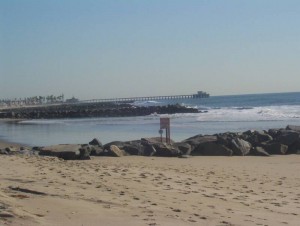
Eddys are much like a rip current and are characterized by swirling, foaming off-colored water. Fish congregate in an eddy where moving water churns up bait and allows them to stay hidden while they wait to ambush food. Once you find the eddy, fish along its edges and cast through the middle to find the fish. Don’t be surprised when the tide or swell direction changes and the opposite side of the jetty becomes the best place to fish.
Estuaries and river mouths are almost always connected as a way for fish to run from the warmer breeding grounds of the estuary out to the open ocean. The California coast was once littered with hundreds of natural estuaries that acted as rockeries for growing fish stocks. After unprecedented development and growth many of these breeding grounds were filled or closed off to ocean circulation. Still there remain a few in almost every beach community that offer fantastic surf fishing.
When approaching an estuary and river mouth area use the same rule of observation as with jetties—determine the direction of the swell and current and how it effects water movement. Tidal flow will have a much bigger effect on fishing the river mouth. A high going to a low tide will pull water out of the estuary and toward the open ocean. A low going to a high tide will push water and waves up into the estuary and change the direction and movement of fish.
Again, look for the formation of eddys. On an upcoming tide, an eddy may form just inside the river mouth. As tide recedes, an eddy may form just outside the river mouth in an area of open-ocean. Fish your bait along this edge and allow it to be pulled by the tide and current into the strike zone. Try to stay away from areas where the water is moving quickly as fish here will not be able to catch up with your bait.
The best way to become familiar with good fishing areas is by looking up your favorite strip of coast at: http://earth.google.com/ and mapping out a strategy for fishing. At this site you’ll be able to zoom into any coastline on the planet and find the best spots to fish. Look for areas where jetties and river mouths meet the beach. You can also find areas where there are large inshore holes or sand bars, points, kelp and reefs. Take some time to research your areas and you’ll have a lot more luck with a lot less gas!
Next time we will look at the best times, tides and baits to use for catching halibut in the surf. Until then, I’ll see you at the beach.
Extra info for the readers? Hot Surf Tip: The best time to fish for halibut is just after the grunion run. As grunion come ashore so do halibut to feed. A good run holds halibut near shore for up to two weeks as they search for bait, spawn and digest what they have found. Grunion, anchovy, sardine and many spoons and hard baits work great at these times.
Halibut Facts: The current pending record for California halibut is held by Frank Rivera of Camarillo, CA. His fish was 67.3 pounds and landed on Friday, July 1 off Santa Rosa Island while fishing aboard the Mirage out of Oxnard.
Know your regulations: 28.15. HALIBUT, CALIFORNIA. Limit: Five in waters south of a line extending due west magnetic from Point Sur, Monterey County, and three in waters north of a line extending due west magnetic from Point Sur, Monterey County. Minimum size: 22” in total length.
Another halibut falls for the lucky craft!
